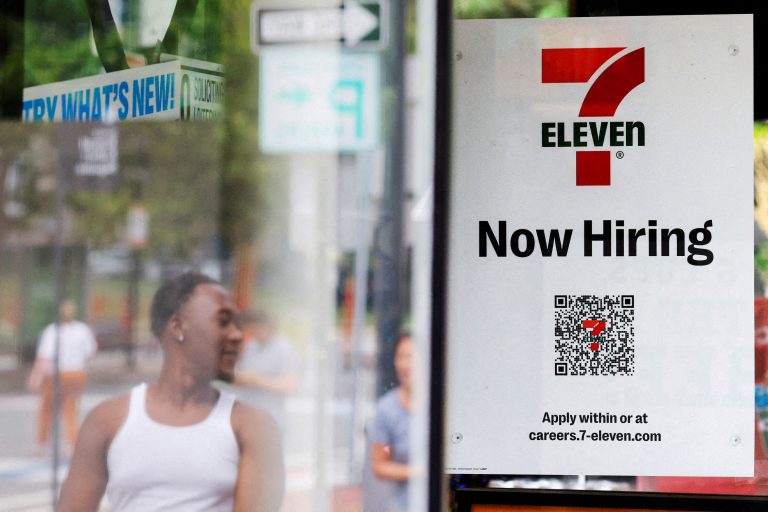U.S. job growth slowed marginally in June, but a rise in the unemployment rate to more than 4.1 percent and wage gains still moderate pointed to an easing of labor market conditions.
The Federal Reserve is on track to start cutting interest rates this year.
The Labor Department’s report on Friday, July 5, also showed the economy created 111,000 fewer jobs in April and June than previously estimated.
About 277,000 people entered the labor force last month, accounting for the increase in the jobless rate from 4.0 percent in May to the highest level since November 2021.
Financial markets expect the U.S. central bank to start its easing cycle in September after it aggressively tightened monetary policy in 2022 and 2023.
Success
You are now signed up for our newsletter
Success
Check your email to complete sign up
Lifted by government hiring, non-farm payrolls increased by 206,000 jobs last month, the Labor Department’s Bureau of Labor Statistics said.
Data for May was revised sharply down to show 218,000 jobs added, instead of the previously reported 272,000.
Payrolls for April were revised down by 57,000 to 108,000.
Economists asked by Reuters had forecast payrolls would increase 190,000 last month, with the unemployment rate unchanged at 4.0 percent. Job growth has averaged about 220,000 per month over the last 12 months.
Brian Coulton, the chief economist at Fitch Ratings, said, “slowly, but surely, U.S. labor market conditions are cooling,”
“Alongside recent better inflation prints, this will help reassure the Fed that they can safely start cutting rates in September.”
According to experts, the economy needs to create at least 150,000 jobs per month to keep up with growth in the working-age population, taking into consideration the recent surge in immigration.
Hiring in June continued to be driven by sectors like healthcare and state and local governments, which have seen the number of staff going back to pre-pandemic levels.
Government employment rose by 70,000 jobs, excluding education and state government. The healthcare sector added 49,000 positions.
Construction payrolls increased by 27,000 jobs. But the retail sector shed jobs, as did manufacturing.
Professional and business services employment declined by 17,000 jobs, with temporary help jobs dropping by about 49,000. That likely portends to slower payrolls gains ahead.
Wage growth slows
The 525 basis points worth of rate hikes from the Fed since 2022 as well as COVID-19 pandemic effect on savings are eroding demand for labor, goods and services.
Financial markets saw a roughly 72 percent probability of a rate cut at the Fed’s meeting held Sept. 17 and Sept. 18. Traders are also pricing in a rising chance of a second rate cut in December.
The Fed has maintained its benchmark overnight interest rate in the current 5.25 percent -5.50 percent range since last July.
Average hourly earnings rose 0.3 percent last month after advancing 0.4 percent in May. In the 12 months through June, wages increased 3.9 percent. That was the smallest gain in wages since June 2021 and followed a 4.1percent rise in May.
Wage growth in a 3 percent -3.5 percent range is seen as consistent with the Fed’s 2 percent inflation target.
Reuters contributed to this report.







